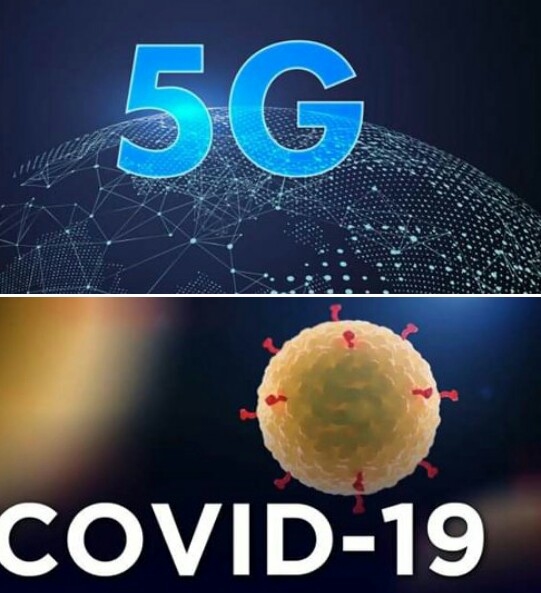
What experts say about 5G technology
Technology has continued to evolve, redefining service delivery in both private and public sectors, finance, medicine, aviation, maritime and many more. With the evolution of technology has come the fifth generation (5G) too. The outbreak of COVID-19 pandemic has once again reopened anxiety over the harmful effects of the use mobile technology,
LUCAS AJANAKU writes.
With the lockdown of Lagos State, the economic jugular vein of the country, Abuja, the political headquarters of the country and Ogun State on account of its proximity to Lagos, the social media space has been inundated with well written analysis, voice, text and even documentaries, tracing the origin of the rampaging coronavirus to the development of 5G technology by Chinese original equipment manufacturer (OEM), Huawei Technologies.
According to experts, the logical fallacies explained that the COVID-19 coronavirus was widely reported to have originated at a market in the city of Wuhan in China, around December last year. China also happened to have switched on some of its first 5G networks around November same year, so somehow, people, especially those who fear new technology and/or do not understand it, thought that there must have been some kind of causal relationship between the introduction of 5G and the inception of the new virus. It was even alleged that people feel down and died in the streets while some animals and plants also died as a result of the development.
Some analysts have blamed the resurgence in the campaign against 5G on the United States government (US) that has not hidden its aversion to the deployment of the technology because of the fear of its national security.
In a widely circulated video clip, Senator Marco Rubio of Florida, had warned about the continued rise of China and the complacence of the US because the “policy makers were too busy arguing with each other and playing dumb ridiculous games on a regular basis. Meanwhile China was focused like a laser with a plan and they executed.”
He warned that soon, the US president might not be able to speak with another foreign leader without the Chinese eavesdropping the discussion because of the powers of quatum computing which he said makes nonsense of encryption. As the world moves close to autonomous cars which will be driven largely by 5G technology, Rubio warned that US may manufacture such cars but would need the approval of the Chinese authorities to put them to use, adding that there is need for balance of power.
How it started
Many of these arguments trace back to the discussions that pop up every year about the potential health impact of using cellphones at all.
According to the Centers for Disease Control and Prevention and the World Health Organisation web sites, ongoing studies have yet to provide any clear link between what’s called non-ionising radiation that all forms of radio signals generate –everything from cellphones to TV transmissions to traditional radio signals – and human health.
These health organisations also don’t completely rule out the possibility of non-ionising radiation having some impact on human health. They say more science still needed to be done on long-term exposure to it. However, virtually all of their caution relates to the possibility of causing cancer after years (or even decades) of usage – not just one month.
Giving a background to mobile telecoms technologies, the International Commission on Non-Ionising Radiation Protection (ICNIRP) said mobile telecoms technologies (mobile phones) transmit and receive radiofrequency electromagnetic fields (RF EMFs) in defined ways that allow communication to occur. “The specific method of utilising the RF EMFs is referred to as a “wireless standard”. For example, the wireless standard used for the First Generation of mobile telecommunication is referred to as “1G”. As technology develops, these standards are updated, and there can be a family of different wireless protocols that are collectively referred to as “1G”. For example, “UMTS” is a well-known protocol within the 3G family, and “LTE” is a well-known protocol within the 4G family. However, where a particularly large or important change is introduced to the standard, the overarching label for the wireless standard is updated accordingly. For example, where large changes were made to the 1G wireless standard, the new standard was then referred to as the second generation wireless standard, or “2G”. Similarly, “2G” was replaced with “3G”, “3G” with “4G”, and now that substantial developments are being implemented relative to 4G, a fifth generation of wireless standard has emerged that is known as “5G”,” the group said.
There are a number of differences between 5G and previous wireless standards. One of these is that, in addition to the EMF frequencies that are used for 3G and 4G standards, some 5G communication technologies utilise higher EMF frequencies (for instance 28 gigahertz (GHz) is currently used in the US). EMFs at higher frequencies produce relatively superficial exposure, with less power penetrating deep into the body; the restrictions in the ICNIRP guidelines account for this to ensure that exposure does not cause any harm. Different EMF frequencies also behave differently in the environment, and as a result, additional antennas are required to utilise the higher frequencies. “These are not expected to affect the exposure scenario appreciably, and initial measurement studies suggest that exposure from 5G antennas will be approximately similar to that from 3G and 4G antennas.
“A key feature of the 5G wireless standard is that it will use beam-forming technology, which allows for the RF EMFs to be focused to the region where it is needed (e.g. to a person using a mobile phone), rather than being spread out over a large area,” the group said.
RF effects, health implications
The group said RF EMFs have the ability to penetrate the human body, with the main effect of this being a rise in temperature in the exposed tissue.
The human body can adjust to small temperature increases in the same way as it does when undertaking exercise and performing sporting activities. This is because the body can regulate its internal temperature. However, above a certain level (referred to as the threshold), RF exposure and the accompanying temperature rise can provoke serious health effects, such as heatstroke and tissue damage (burns).
“Another general characteristic of RF EMFs is that the higher the frequency, the lower the depth of penetration of the EMFs into the body. As 5G technologies can utilise higher EMF frequencies (24 GHz) in addition to those currently used (4 GHz), power from those higher frequencies will be primarily absorbed more superficially than that from previous mobile telecommunications technologies. However, although the proportion of power that is absorbed superficially (as opposed to deeper in the body) is larger for the higher frequencies, the ICNIRP (2020) restrictions have been set to ensure that the resultant peak spatial power will remain far lower than that required to adversely affect health. Accordingly, 5G exposures will not cause any harm providing that they adhere to the ICNIRP (2020) guidelines.
“The ICNIRP RF EMF guidelines have taken the above considerations into account and protect against all potential adverse health effects relating to exposure to RF EMFs from 5G technologies. This includes potential differences in the effect of RF EMFs as a function of age, health status, and depth of penetration, the effect of both acute and chronic exposures, and it includes all substantiated effects regardless of mechanism.
It is important to note that, in terms of the 5G exposure levels measured so far, the ICNIRP (1998) guidelines would also provide protection for 5G technologies. However, as it is difficult to predict how new technologies will develop, ICNIRP (2020) has made a number of changes to ensure that new technologies such as 5G will not be able to cause harm, regardless of our current expectations. These changes include the addition of whole body average restrictions for frequencies 6 GHz, restrictions for brief (6 minutes) exposures for frequencies 6 GHz, and the reduction of the averaging area for frequencies 6 GHz. ICNIRP closely follows the RF EMF related scientific research and any new outcomes relevant to health will inform the evolution of the guidelines,” the group said.
WHO
The World Health Organisation Global Health Observatory (GHO) data on Electromagnetic fields (EMF), said EMFs are present everywhere in the human environment. Electric fields are produced by natural sources such as the local build-up of electric charges in the atmosphere associated with thunderstorms while the earth’s magnetic field is used by birds and fish for navigation. Human-made sources include medical equipment using static fields (e.g. MRI), electric appliances using low frequency electric and magnetic fields (50/60 Hz), and various wireless, telecommunications and broadcasting equipment using high radiofrequency electromagnetic fields (100kHz-300 GHz).
“When properly used, electromagnetic fields greatly improve our quality of life, health and well-being. However, above certain levels, these fields can be harmful to health and affect the human body in different ways depending on their frequency. Therefore, countries have set standards to limit exposure to electromagnetic fields, either for specific frequencies and applications, or over the whole electromagnetic field spectrum.
It said 80per cent of countries around the world have developed regulations on standards in line with the International Telecommunications Union (ITU) standards.
Similarly, a study by the WHO on Electromagnetic Fields (EMF) radiation from Base Transceiver Stations (BTS) and public health, said: “Considering the very low exposure levels and research results collected to date, there is no convincing scientific evidence that the weak RF signals from base stations and wireless networks cause adverse health effects.”
NCC
Nigeria, as a member of the ITU has developed standards and regulations around the deployment equipment to be used to offer services across the country by all its licencees through the Nigerian Communications Commission (NCC) which regulates the telecoms sector.
Its CEO, Prof Garba Dambatta, has said the Commission does not regulate technology but ensures it first of all embark on trials of any new technology to know its strengths and weaknesses and to certify that it does not have any harmful impacts or hazardous effects on the health of the citizens.
The need to develop standards is not lost on Prof. Danbatta as the world moves into the world of emerging technology of artificial intelligence (AI), internet of things (IoT), Augmented Reality and others which would be driven by 5G.
He said: “To achieve a resilient and robust future network, standards must be developed to accommodate the evolution of new and emerging technologies. The new frontier comes with great value and potentials for humanity and so, Nigeria and indeed, Africa cannot afford to be left behind.”
It was perhaps in the spirit of first testing the application of new technologies before going full blast that the Commission conducted trial of 5G last year with MTN Nigeria. The trials were done in three major cities of Lagos, Abuja and Calabar, Cross River State. The essence of the trial were to ensure it met its expectation in terms of speed, capacity and latency, which help to ensure efficiency and improve the lives of the citizens.
Minister of Communications and Digital Economy Dr. Ibrahim Pantami denied the issuance of 5G licence to any operator in the country. Telecoms firms have allayed fears over the deployment of 5G in the country. Acting under the aegis of the Association of Telecommunication Companies of Nigeria (ATCON), the group said instead of destroying the human race, 5G will to improve the day to day lives of people
ITS President, Olusola Teniola, described the development as rumours.
A Professor of Electrical and Electronic Engineering, Department of Electrical and Information Engineering, Covenant University, Otta, Ogun State, Prof. Francis Idachaba’s also shared his views on his Facebook Page.
He wrote: “The issue of radiation is also unfounded as if the transmit power of the BTS is increased tremendously to overcome the Pathloss and increase the size of the cells, the transmit power also of the mobile users would have to be Increased tremendously to ensure a 2way communication is achieved. This will mean returning us back to bulky and heavy phones as the transmit power relies heavily on battery power.”












